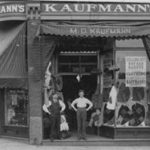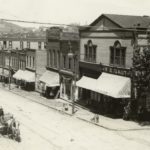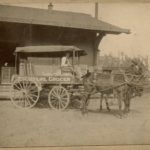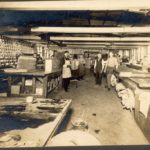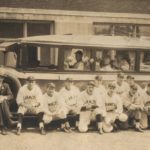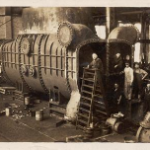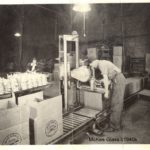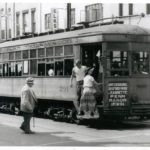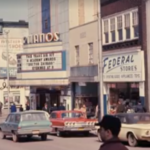Take a stroll through time…

Jeannette’s vast history began, even before it was officially named a city. In August 1763, it found itself in the midst of Pontiac’s War at the Battle of Bushy Run, a fight between the British troops and the Native Americans. The brawl lasted for two days (August 5-6), but in the end, the British successfully took the Native Americans by storm, causing a great turning point in Pontiac’s War because it stopped the Native Americans from taking over Pittsburgh, which was known as Fort Pitt during this time, and it allowed for a “gateway to western expansion.”1
Then, nearly 126 years later in the spring of 1889, Jeannette officially became known as a borough, after numerous farms were bought a year prior, in order to pave way for the creation of the Chambers and McKee Glass Works owned by J. A. Chambers and H. Sellers McKee. Utilizing this land, numerous brick houses were built to construct homes for the people who worked at the glass company. During this time, the city actually received its name, “Jeannette,” after the wife of H. Sellers McKee. Due to the establishment of the glass factory, Jeannette also earned its first and longstanding nickname: “The Glass City.”
Also, Jeannette’s great location for its coal and natural gas supply, its closeness to Pittsburgh, and its proximity to many railroads made it the center of industry, and it eventually became home to seven large glass factories, a rubber plant (The Pennsylvania Rubber Works), and the world’s biggest tableware glass factory, causing Jeannette to acquire another nickname: “The American Workshop.”
As well as naming the city itself, J. A. Chambers and H. Sellers McKee named the main street in Jeannette “Clay Avenue” after Richard W. Clay, who helped support the men financially.
In addition to being famous for industry and glass factories, Jeannette has established itself as a leader in sports, particularly football. This all started in August of 1895, when the Jeannette Athletic Club took part in the first professional football game against the Latrobe Athletic Association. Latrobe paid Jeannette $50.00 to play in this game.2
Years later in 1914, William Swan Elliott decided to move his corporation—the Elliott Company—to Jeannette. This business, which does maintenance on, produces, and installs large turbine engines and other hefty rotating equipment, has caused a lot of growth for the city to this day.
Then, on January 1, 1938, Jeannette officially became a city, with Attorney John M. O’Connell as its first mayor.
As the 1960s rolled around, Jeannette was home to around 16,000 people. At this time, there were many different department stores, such as J. C. Penny and Royers. Also, there were a lot of movie theaters, nightclubs, and other great tourist attractions.3
- Kaufmann’s Department Store (late 1800s)
- 400 Block of Clay Avenue (1902)
- E. A. Myers Grocery Store (before 1916)
- PA Rubber Works (early 1900s)
- Mid-to-late 1920s
- Elliott Company
- McKee Glass (1940s)
- West Penn Railways Company Street Car (1950s)
- Clay Avenue (1965)
1 Bushy Run Battlefield, “History of the Battle of Bushy Run,” Bushy Run Battlefield, 2012, <http://bushyrunbattlefield.com/history/> (accessed 2 June 2017).
2 Karen Fetter, “Jeannette,” In Westmoreland, 2017, <http://inwestmoreland.com/jeannettea-great-town-in-westmoreland-county/> (accessed 2 June 2017).
3 Linda Metz, “Industry played big part in Jeannette’s heyday,” Pittsburgh Post-Gazette, May 9, 2013, <http://www.post-gazette.com/local/east/2013/05/09/Industry-played-big-part-in-Jeannette-s-heyday/stories/201305090325> (accessed 5 June 2017).


